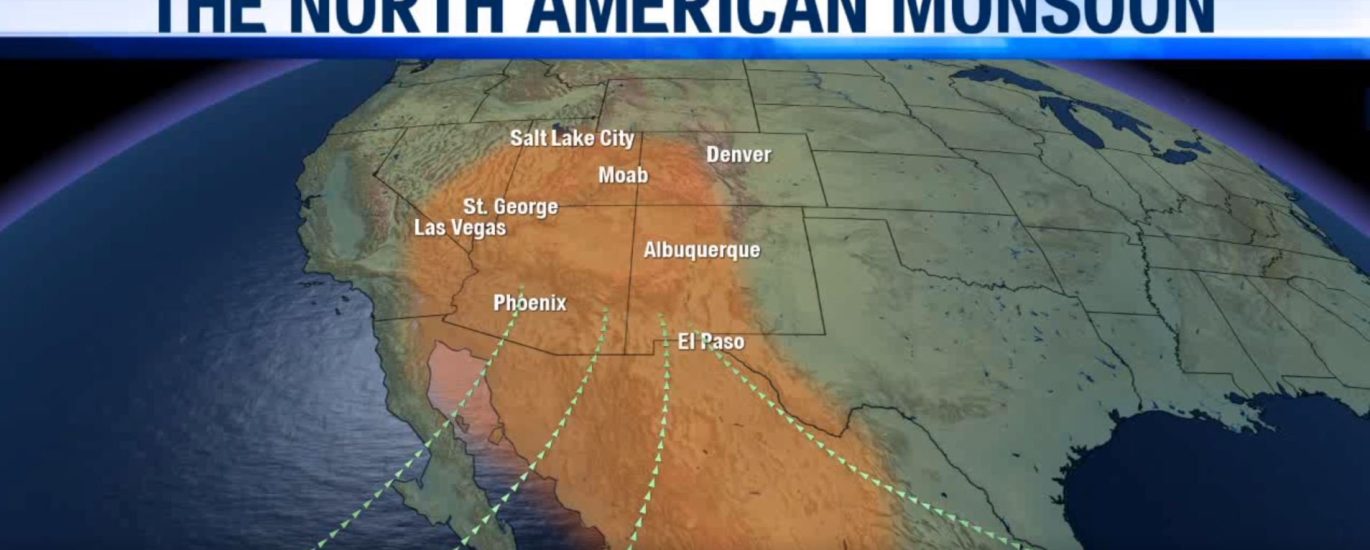Utah’s monsoon season arrives in mid-July, eagerly awaited by locals and nature enthusiasts alike. When is monsoon season in Utah, you ask? This atmospheric shift brings relief from the scorching summer heat, painting the skies with dramatic thunderclouds and providing much-needed moisture to the arid landscape. The monsoon’s arrival marks a time of transformation, as dry desert vistas come alive with vibrant colors and the sweet scent of rain. Let’s delve into the captivating beauty and rhythm of Utah’s monsoon season.
When is Monsoon Season in Utah
If you’ve ever wondered when the monsoon season hits Utah, you’re not alone. The monsoon season in Utah brings relief from the dry summer heat and offers a refreshing break from the scorching sun. In this article, we’ll explore everything you need to know about when the monsoon season arrives in Utah, what to expect during this time, and how you can make the most of it.
Understanding Monsoon Season
Before we delve into when monsoon season hits Utah, let’s first understand what a monsoon is. A monsoon is a seasonal shift in the wind pattern that brings heavy rains to a region. In the case of Utah, the monsoon season typically occurs during the summer months, between July and September.
Factors Influencing Monsoon Season in Utah
Several factors influence when the monsoon season arrives in Utah. The primary factor is the position of the jet stream, a fast-flowing current of air in the upper atmosphere. When the jet stream shifts northward, it brings moist air from the Gulf of Mexico into Utah, leading to increased chances of rain.
Topography
Utah’s diverse topography also plays a role in influencing the timing of the monsoon season. The state’s mountain ranges and valleys can create local variations in weather patterns, affecting when and where the monsoon rains will fall.
El Niño and La Niña
El Niño and La Niña are climate patterns that can impact the intensity of the monsoon season in Utah. During an El Niño event, warmer-than-average sea surface temperatures in the Pacific Ocean can lead to increased precipitation in the region. Conversely, La Niña events, characterized by cooler sea surface temperatures, can result in drier conditions.
Timing of Monsoon Season in Utah
In Utah, the monsoon season typically begins in early July and lasts through September. However, the exact timing of the monsoon’s onset can vary from year to year. Meteorologists closely monitor weather patterns and atmospheric conditions to predict when the monsoon rains will arrive in Utah.
July
During the early part of the monsoon season in July, Utah may experience sporadic thunderstorms and localized downpours. These storms are often accompanied by lightning and gusty winds, providing much-needed moisture to the arid landscape.
August
By August, the monsoon season in Utah is in full swing, with more widespread rainfall and longer-lasting storm systems. The increased humidity during this time can create muggy conditions, but the rain helps to cool things down and replenish water sources.
September
As September rolls around, the monsoon season in Utah begins to wind down. While there may still be occasional thunderstorms and showers, the overall frequency of rainfall decreases as summer transitions into fall.
What to Expect During Monsoon Season in Utah
During the monsoon season in Utah, you can expect a mix of sunny days and afternoon thunderstorms. The storms can bring heavy rain, lightning, and gusty winds, so it’s essential to stay weather-aware and be prepared for changing conditions.
Flash Floods
One of the most significant risks during the monsoon season in Utah is the potential for flash floods. Heavy rainfall can quickly overwhelm dry desert landscapes, leading to flash flooding in low-lying areas. It’s crucial to avoid driving through flooded roadways and to seek higher ground if you encounter rapidly rising water.
Temperature Changes
The arrival of monsoon season in Utah can also bring relief from the summer heat. The rain-cooled air can lower temperatures, providing a welcome break from the hot, dry conditions that typically prevail in the state during the summer months.
Outdoor Activities
Despite the occasional storms, the monsoon season in Utah can be a great time to enjoy outdoor activities. The cooler temperatures and greener landscapes make for ideal hiking, camping, and exploring opportunities. Just be sure to pack rain gear and be prepared for changing weather conditions.
Make the Most of Monsoon Season in Utah
To make the most of the monsoon season in Utah, consider exploring the state’s national parks and scenic landscapes. The rain can enhance the beauty of Utah’s red rock formations and lush valleys, creating stunning photo opportunities.
Visit Arches National Park
Arches National Park is a must-visit destination during the monsoon season in Utah. The dramatic rock arches and sandstone formations take on a vibrant glow after a fresh rain, making for unforgettable views and photo ops.
Explore Zion National Park
Zion National Park offers a different perspective during the monsoon season, with its towering cliffs and emerald-green vegetation contrasting against the stormy skies. Hiking the park’s trails after a rain shower can be a magical experience.
Experience Bryce Canyon National Park
Bryce Canyon National Park’s unique hoodoo rock formations are a sight to behold during the monsoon season. The contrast between the red rocks and green foliage, set against a backdrop of storm clouds, creates a surreal and captivating landscape.
In conclusion, the monsoon season in Utah brings a welcome change to the arid summer climate, ushering in cooler temperatures and refreshing rainfall. By understanding when the monsoon season hits Utah and what to expect during this time, you can make the most of this unique weather phenomenon and explore the state’s natural beauty in a new light. So, grab your rain gear and head out to experience the magic of monsoon season in Utah!
What’s in store for Southern Utah’s monsoon season this year?
Frequently Asked Questions
When does monsoon season typically occur in Utah?
Monsoon season in Utah usually takes place from mid-July to mid-September. During this period, the state experiences an increase in moisture levels, leading to higher chances of thunderstorms and rainfall.
What are the impacts of monsoon season in Utah?
The monsoon season in Utah can bring both benefits and challenges. The increased rainfall can help alleviate drought conditions, replenish reservoirs, and support agricultural activities. However, the heavy downpours can also lead to flash floods, mudslides, and dangerous driving conditions.
How does monsoon season affect the temperature in Utah?
During monsoon season, the increased cloud cover and rainfall can lead to cooler temperatures in Utah. While the days may still be warm, the presence of thunderstorms and rain showers can provide temporary relief from the summer heat.
Final Thoughts
Monsoon season in Utah typically occurs from July to September. During this time, the state experiences an increase in moisture and thunderstorm activity. The monsoon season brings relief from the heat and helps replenish water sources. Understanding when is monsoon season in Utah is essential for planning outdoor activities and being prepared for sudden weather changes. Stay informed and enjoy the unique weather patterns that this season brings to the region.






